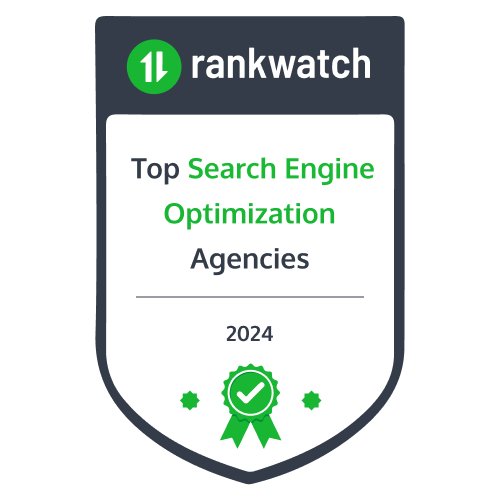Optimizing Your Website for Better Search Engine Visibility
Image source: Freepik
With billions of searches taking place every day, competition for online attention has never been tougher. The reality is clear: if your website doesn’t rank high on search engines like Google, it’s virtually invisible to potential customers. Research shows that 75% of users never scroll past the first page of search results. This means your business’s online success hinges on how well your site performs in organic search. Whether you’re struggling to climb the ranks or simply trying to keep up with algorithm changes, understanding and mastering search engine optimization (SEO) is key to unlocking that visibility.
While content plays a central role, your site’s speed, structure, and overall user experience are just as critical. Have you optimized your meta tags? Are your pages mobile-friendly? Is your site lightning fast? These are just a few questions we’ll explore as we dive into strategies that will help you rise in the search results and, ultimately, grow your online presence.
Performing Keyword Research
A key step in optimizing your site is performing thorough keyword research. This process helps you discover the terms or phrases that people use when searching for content like yours. It’s not just about targeting popular keywords but identifying those that align with your website’s goals.
Start by focusing on search intent analysis. Understanding why people are searching for specific terms—whether they’re seeking information or ready to make a purchase—allows you to craft content that better serves their needs.
Additionally, explore competitor keyword gaps. These are keywords your competitors are ranking for that you may not be targeting. Identifying these gaps can give you an advantage, enabling you to target valuable keywords that already attract traffic to similar sites.
Don’t overlook seasonal trends. Certain keywords fluctuate in popularity throughout the year. For instance, searches for “Halloween costumes” peak in October, while “summer vacations” trend in the spring. Adjusting your keyword strategy to accommodate these shifts helps your site stay relevant year-round.
Optimizing Site Structure
Your site’s structure is a critical component of good SEO. A well-organized site makes it easier for users and search engines to navigate and understand your content. Let’s break down how you can refine your site’s structure to improve visibility.
Start by developing a clear hierarchy. Picture your website as a tree: the homepage serves as the root, while sections and categories branch out. Subcategories and individual pages act as leaves. A structured hierarchy not only helps search engines efficiently index your site but also ensures that users can easily find what they need.
Consider URL simplification as well. Your URLs should be simple, readable, and descriptive. Avoid using long strings of numbers or unnecessary characters. For example, instead of “/p=1234”, opt for something like “/about-us.” Well-structured URLs improve navigation for both users and search engines.
Incorporate breadcrumb navigation for an added boost. Breadcrumbs are links that allow users to trace their path from the homepage to their current location on your site. These navigational aids not only enhance the user experience but also help search engines understand the layout of your site.
Crafting Quality Content

Image source: Freepik
High-quality content is the backbone of any successful SEO strategy. Over 50% of marketers use keyword rankings and organic traffic to measure the success of their SEO strategies, highlighting how critical content is to driving performance. In fact, websites that produce consistent, valuable content generate 8x more traffic. To engage your audience and improve search rankings, your content must not only be rich in keywords but also valuable, well-written, and easy to understand. High-quality content helps establish trust with readers, which in turn boosts the chances of converting them into customers.
Crafting Attention-Grabbing Headlines
The headline is the first thing visitors see, so it needs to capture attention immediately. Studies show that while 80% of people read headlines, only 20% continue to the rest of the content. This means your headline must do more than just convey a topic—it must spark curiosity while promising clear value. Effective headlines often appeal to emotions, pose a question, or suggest a solution to a problem, drawing the reader in to explore further. If your headline fails to engage, you lose the opportunity to present your valuable content to a wider audience.
Understanding Your Audience
To create truly engaging content, you need to know who you’re speaking to. Understanding your target audience—their challenges, interests, and pain points—allows you to tailor your content to their specific needs. Personalized, relatable content fosters deeper connections with your readers, making them more likely to engage with and share your content. Furthermore, when your content aligns with your audience’s needs, it improves SEO performance by reducing bounce rates and increasing dwell time.
Providing Unique Insights
In a crowded online landscape, originality is key to standing out. Instead of rehashing information that’s already available, use your expertise to offer unique insights, original research, or fresh perspectives. Search engines prioritize content that provides value and is distinct from the competition, meaning that offering something new can improve your rankings. By positioning your content as a valuable resource, you’re more likely to attract backlinks and shares, which will further boost your site’s authority and search visibility.
Keeping It Clear and Simple
Content readability plays a significant role in user engagement. Avoid jargon or overly complicated language, and break up your text into digestible sections. Use short paragraphs, bullet points, and subheadings to make your content easy to navigate. The clearer and simpler your writing, the more accessible it will be to a broader audience. This will encourage users to stay on your site longer, improving both user experience and SEO metrics like time on page and bounce rate.
When creating content, focus on these key aspects:
- Understand Your Audience: Knowing who your readers are allows you to tailor your content to meet their needs. Identify their challenges, interests, and preferences to ensure your content speaks directly to them. The more relatable your content, the more likely users are to return for more.
- Provide Unique Insights: Don’t just rehash what’s already out there. Use your expertise or original data to offer new perspectives. Not only does this make your content more valuable, but search engines also reward originality, boosting your rankings.
- Keep It Clear and Simple: Avoid jargon and overly complicated sentences. The easier your content is to read, the more likely users are to stay engaged. This improved engagement can positively affect your SEO performance.
Improving Page Load Speed
Page load speed is a critical factor in both user experience and SEO rankings. Slow pages frustrate visitors and increase bounce rates, which can hurt your site’s visibility. Here’s how you can improve your website’s speed. Focus on image compression. Large image files are one of the most common culprits of slow page speeds. Compressing your images reduces file size without sacrificing quality, which significantly improves load times—especially for visually heavy sites.
Another important factor is server response time. The time it takes for your server to respond to a browser request directly affects your site’s performance. If your server is slow, it can drag down your entire website. Regularly check your server’s performance, and consider upgrading if necessary. Additionally, optimizing your database or cleaning up unnecessary plugins can reduce the load on your server, improving response times.
Enhancing Mobile Usability
More users are accessing websites from mobile devices than ever before, making mobile usability a top priority for SEO. If your site isn’t optimized for mobile, you’re missing out on significant traffic. Here’s how to enhance your site’s mobile experience. Implement responsive design to ensure your website adapts to different screen sizes. Whether visitors are using a smartphone, tablet, or desktop, your site should look and function seamlessly. Responsive design isn’t just about aesthetics—it’s essential for usability, encouraging visitors to stay on your site longer.
Optimize for touch navigation. Mobile users interact with websites through taps, so buttons and links need to be easy to use. Ensure that buttons are large enough for accurate tapping and that links aren’t placed too closely together to avoid mis-clicks. Simplifying your mobile navigation also enhances usability. Complex menus can overwhelm users on small screens. Consider using a hamburger menu (the three horizontal lines) that expands when tapped, providing easy access to your site’s most important pages without cluttering the screen.
Utilizing Meta Tags Effectively
Meta tags play a significant role in how search engines interpret your site’s content and how it appears in search results. Here’s how to optimize them effectively.
Your meta description tag is particularly important. This short snippet of text appears under your site’s title in search results and provides an opportunity to tell potential visitors why they should click on your link. Keep meta descriptions under 160 characters and ensure they’re both relevant and compelling.
Don’t forget title tags and alt tags for images. Title tags should include your primary keywords and be concise, while alt tags are essential for both image optimization and accessibility, offering descriptions for visually impaired users. optimize your social media meta tags. These control how URLs appear when shared on platforms like Facebook and Twitter. By properly configuring Open Graph and Twitter Cards tags, you can ensure your content looks appealing when shared, increasing the likelihood of click-throughs.
Building Quality Backlinks
Image source: Freepik
Securing quality backlinks from reputable sources can significantly boost your website’s SEO. Here are a few strategies to help you build high-quality links. Engage in link baiting by creating content that’s so valuable or unique that other websites naturally want to link to it. This might include in-depth guides, original research, or visually appealing infographics. The goal is to make your content stand out as a resource worth sharing.
Consider guest posting as well. Reach out to blogs or websites in your niche that accept guest contributions. Writing valuable content for their audience not only expands your reach but also allows you to gain a backlink to your site. Ensure the content is relevant and high-quality, including optimized anchor text linking back to your pages.Pay attention to anchor text optimization. When building backlinks, the clickable text should be relevant to the linked page and include your target keywords. Vary your anchor text to avoid over-optimization, ensuring it feels natural and contextually appropriate.
Analyzing SEO Performance
Regularly analyzing your website’s performance is essential to measuring the success of your SEO efforts. Monitoring progress helps you identify what’s working and where you can improve. Begin by reviewing traffic analysis. Tools like Google Analytics allow you to track how many people visit your site, how long they stay, and which pages they engage with the most. These insights help you determine the effectiveness of your SEO strategies.
Don’t overlook conversion tracking. SEO is not just about driving traffic—it’s about bringing in the right visitors who take action. Whether your goal is to make sales, gather leads, or encourage sign-ups, tracking conversions ensures that your SEO aligns with your business objectives. Focus on user behavior. Understanding how visitors interact with your site—where they click, how far they scroll, and when they leave—offers invaluable feedback on the quality of your user experience. This data can guide you in making necessary adjustments to increase engagement.
Conclusion
Now that you’ve explored these key strategies for optimizing your website, it’s time to take action. Refine your keyword research, structure your site for seamless navigation, and ensure that your content provides real value. Speed up your pages, optimize for mobile users, and take full advantage of meta tags to boost visibility. Build bridges through quality backlinks and regularly monitor your site’s performance to stay ahead.




